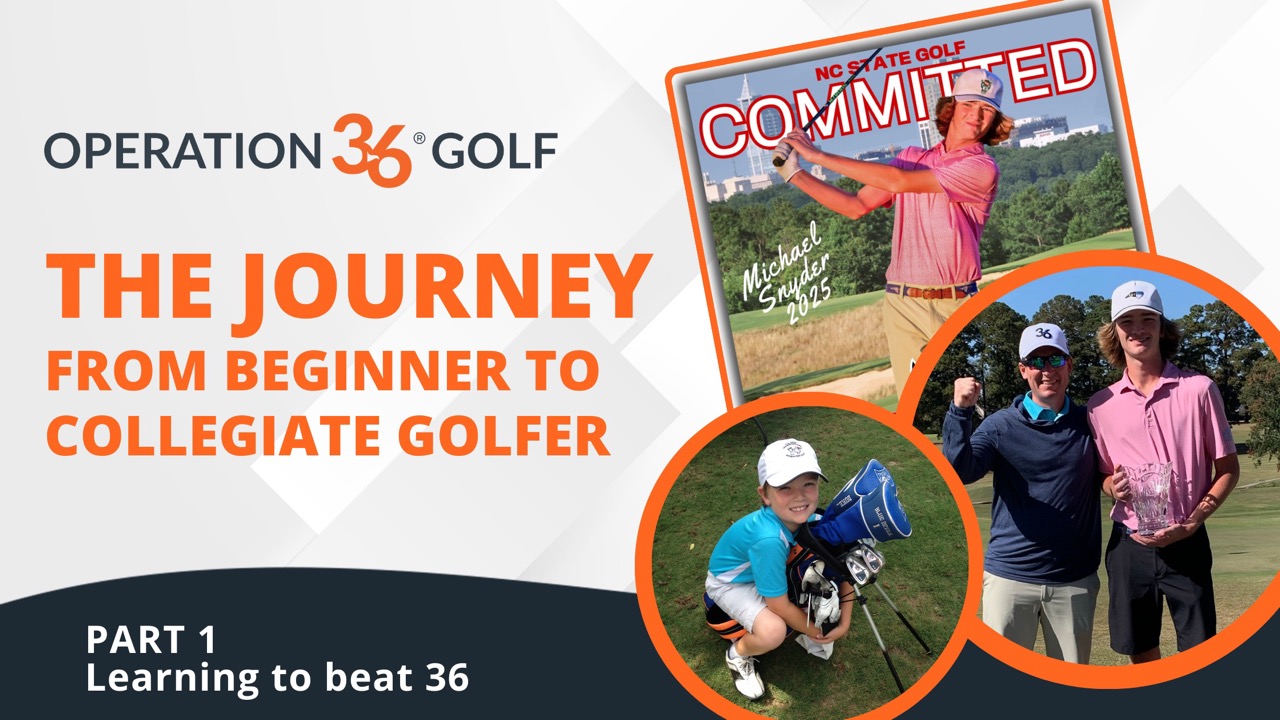
From a very young age, Michael Snyder showed a passion for golf. His parents share a story of him getting plastic clubs, watching golf on TV with his Dad, and hitting them around the house for hours trying to copy the pros. As this passion led to him ultimately breaking the TV in the living room they knew it was time to find the next step!
They were searching for a program or coach who could help channel his passion and guide him. Since Michael’s parents had not done this golf thing with any other of their kids, they started searching around for local options. As parents, they wanted to support him in any way they could. They are both educators and know that sports can help students stay focused in school and give them a healthy outlet to pursue their dreams and goals. After trying baseball, basketball, and soccer, golf was the best option for Michael.
The problem his parents had was they lived in a very remote area of the state, a far cry from the populated areas where traditionally the best golf coaches and programs were offered. They wanted to offer him everything they could to pursue his passion, but they didn’t want to limit the opportunities because of where they lived.
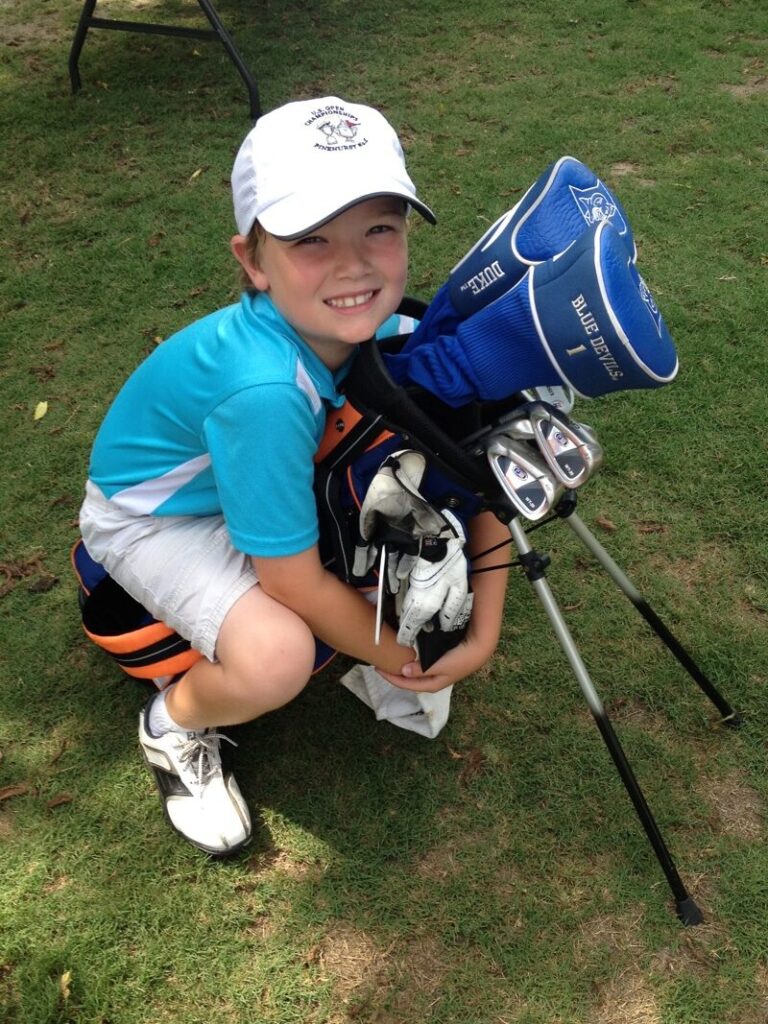
This dilemma that Michael’s parents were in is very common around the world. This happens even in populated areas of the world where parents struggle to find golf programs specifically designed to help young players fall in love with playing the game and provide an environment for them to grow and learn.
Golf coaches are traditionally trained to deliver private golf lessons and they tend to shy away from group lessons with beginners. It’s much easier for coaches to work with people who have already started in the game versus beginner players who have so much to learn. It’s common for golf facilities to disregard providing coaching programs to players in the beginning stages of development.
Golf is not like Karate or Gymnastics, where they have a tried and true system in place to welcome new students. Walk into any Karate dojo and the person behind the counter can explain to you in 20-30 seconds exactly how you can get started and progress in the sport. You look around and see small groups of people training together with similar belt colors. They offer multiple classes throughout the week to fit your schedule. You see the different color belts on the wall and you quickly see that you start in the white belt and progress towards the end, the black belt. It is a very welcoming environment and you feel like you can jump right in.
Fortunately for Michael’s parents, their local golf course was running an Operation 36 program led by golf professionals who were passionate about coaching.
At the time (2013), the local golf course they lived by had a program designed for 7-13 year olds. Michael’s parents visited a Family Orientation night at the course and learned about the plan they had called the Operation 36 program. The coaches shared that the learning process takes time and it involves working through 10 levels. Players use the following to work through the program:
This program alleviated a few of the fears that his parents had.
After talking with Michael, having him hit a few balls on the range, and learning how much he loved the game of golf, the coaches offered to give it a try for a month to see how it went. His parents signed him up and he was excited!!!
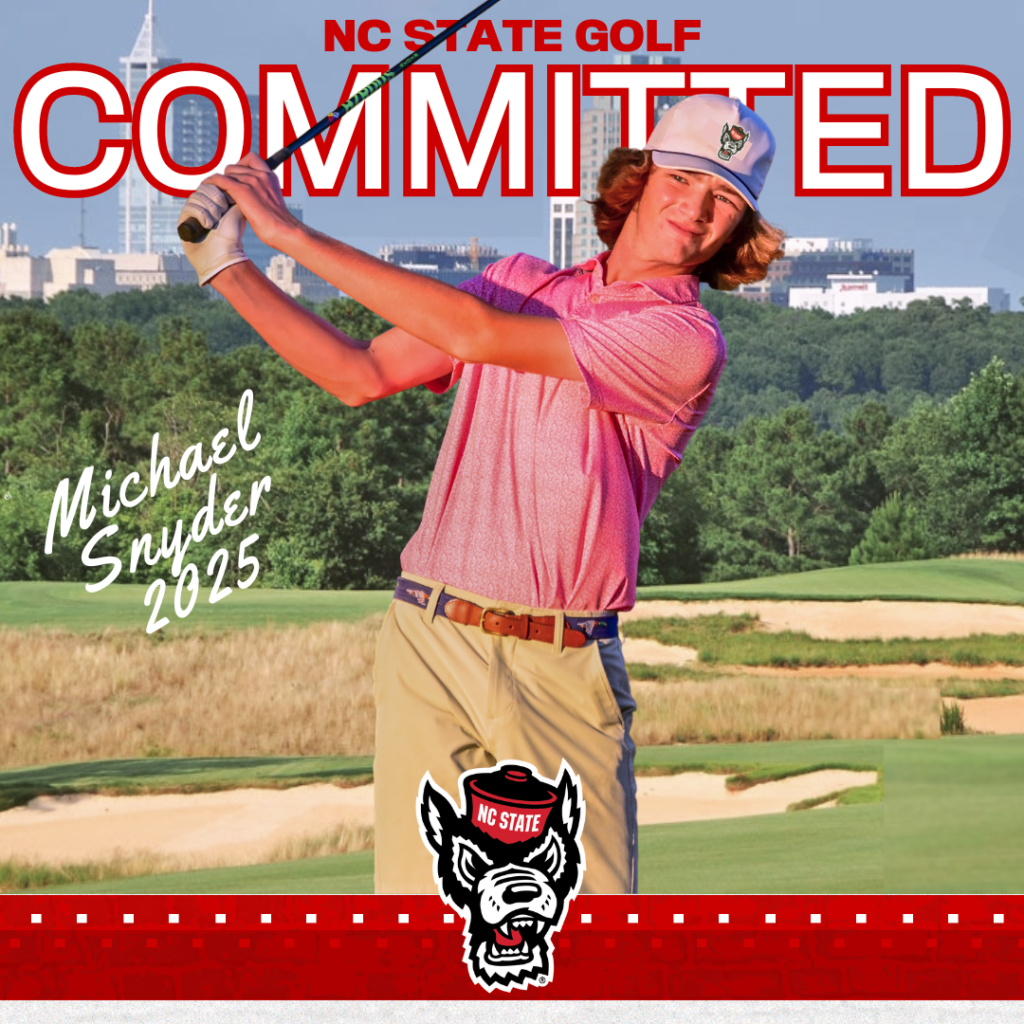
To organize Michael’s journey from a beginner golfer to one of the top 2% of athletes (1 out of 57 high school athletes end up playing Division I college athletics) and to help communicate the different stages he went through, this article will use Alfred North Whitehead's 3 stages of growth that he developed in the early 20th century. These stages are very helpful for us as parents and coaches as we can reference them as we guide our players through each stage. Everyone goes through these stages as they develop in a sport or hobby. You might have a child in your house that is in one of these stages for golf, baseball, chess, gymnastics, violin or any activity.
Of note: What is needed from the environment (parents, coaches, program) in the 1st stage is different from the 2nd stage and so on. Said a different way, “Fun changes for a player over time and we as coaches/parents need to be aware of this and adapt. What was fun at 6 years old might be very different from what is fun at 13 years old.”
In this early stage of being in a learning environment, the student is very excited, curious, and energetic about the experience. It is extremely important that the environment feed the student's enthusiasm and not the opposite. The coaches at this stage, don’t need to technically be an expert, they just need to be able to create a fun environment that feeds a student's curiosity.

At the time, his facility offered this program 8 months out of the year so he would play in approximately 30, 9-hole events (matches) per year from the age of 8 to 13. It would end up being a grand total of 149, 9-hole events that he played in to work through the 10 levels of Operation 36 golf. We knew it took reps to improve at golf, we just never had an idea of how many.
He didn't play 5 times, encounter some adversity, and say that golf wasn't for him. His parents didn't pull him out of golf after playing 50 times thinking that golf wasn't the right fit for him. Fortunately, his parents knew that to get good at something takes time, it doesn't happen overnight and they kept bringing him to the course...149 times...

Michael’s journey or ‘case study’ starts to uncover a clue that we can compare to others in the future to see if this is the norm or it is an outlier. As of this article, Spring 2024, with the information we have at hand of over 150,000 players working through Operation 36, this case is looking more and more like the norm.
At Operation 36, we believe the most effective learning cycle is where a player goes on the course, plays 9 holes, and then spends time training with their coach to work on items they want to improve upon that they learned about on the course. Then go back on the course and play in another 9-hole event. And the goal is to repeat this as often as you can.
Michael went through this learning cycle close to 150 times over a 5-year period of time. No wonder he saw the level of improvement that he did and this prepared him for what would be a very successful junior golf career in both state and regional events as he grew older. He had a huge advantage over other players because of this.
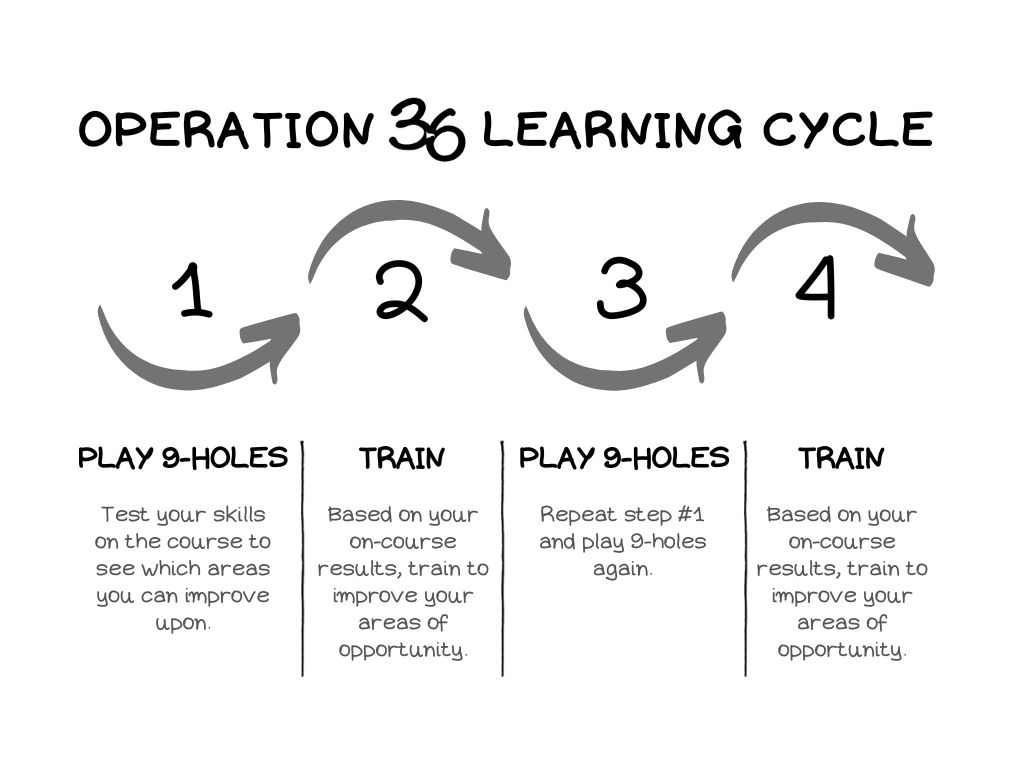
Of note for us, as we try to learn from this, an important ingredient that often gets overlooked is that he lived on the golf course. His parents decided to move to the course when he was 3 years old with the hope of providing a nice, safe, and family friendly neighborhood to raise Michael and his sister. Little did they know that living on the golf course was crucial in Michael being able to get in the amount of practice/playing time that is needed to reach an elite level.
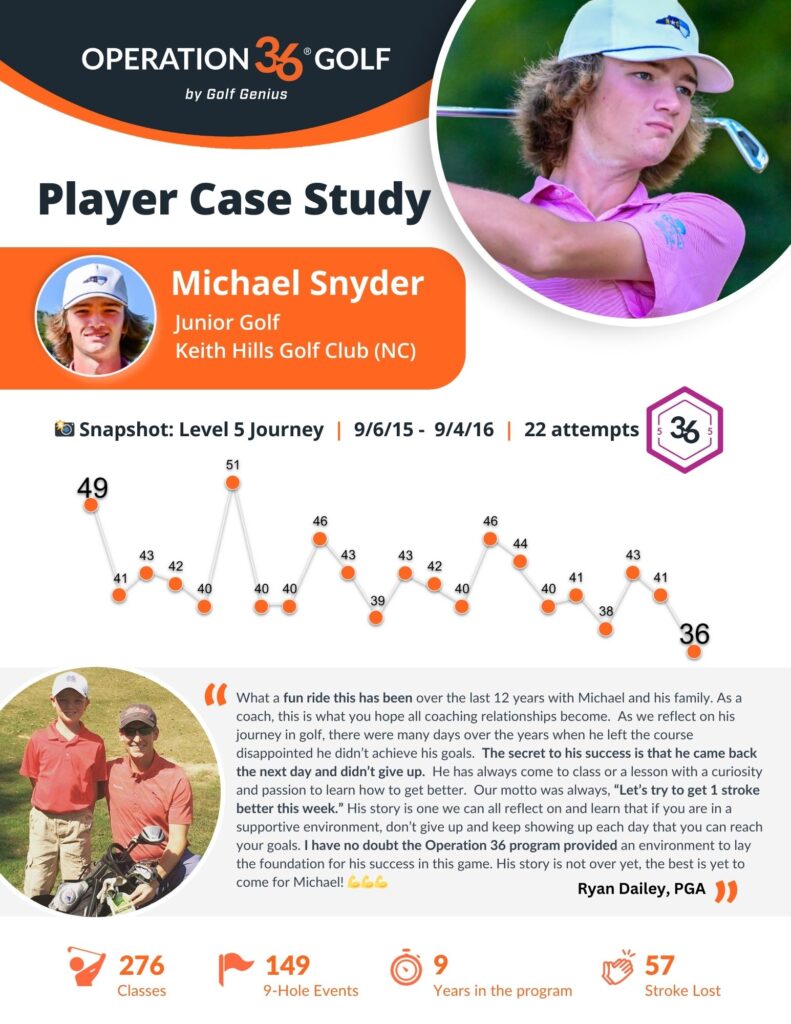
It would be interesting at some point to study a group of successful golfers and see how close they lived to the course. Our guess at this time is that the majority of them would live within a few miles of the course. It’s challenging as parents to get your child to the course consistently if you live a long way from the course.
What did Michael learn in the Romance stage?
PASSION...
As a golf coach, when I reflect on what he learned in the Romance stage, the most important thing he gained was a passion for the game of golf. This is the most important ingredient for a player to have the grit to make it through the journey. Without an unwavering passion for something, it's easy to give up at some point and not power through the challenges.
As he started to progress and see success you could see him start to come to the course more and more. When he started separating himself from the other players by the progress he was making, that drove his passion even more. Then he started to come even more and more until you could say he was ‘obsessed,’ coming to the course 6-7 days a week in the summer. Many other juniors in our area were more talented than Michael. However, none of them were obsessed as much as he was.
And obsession beats talent…
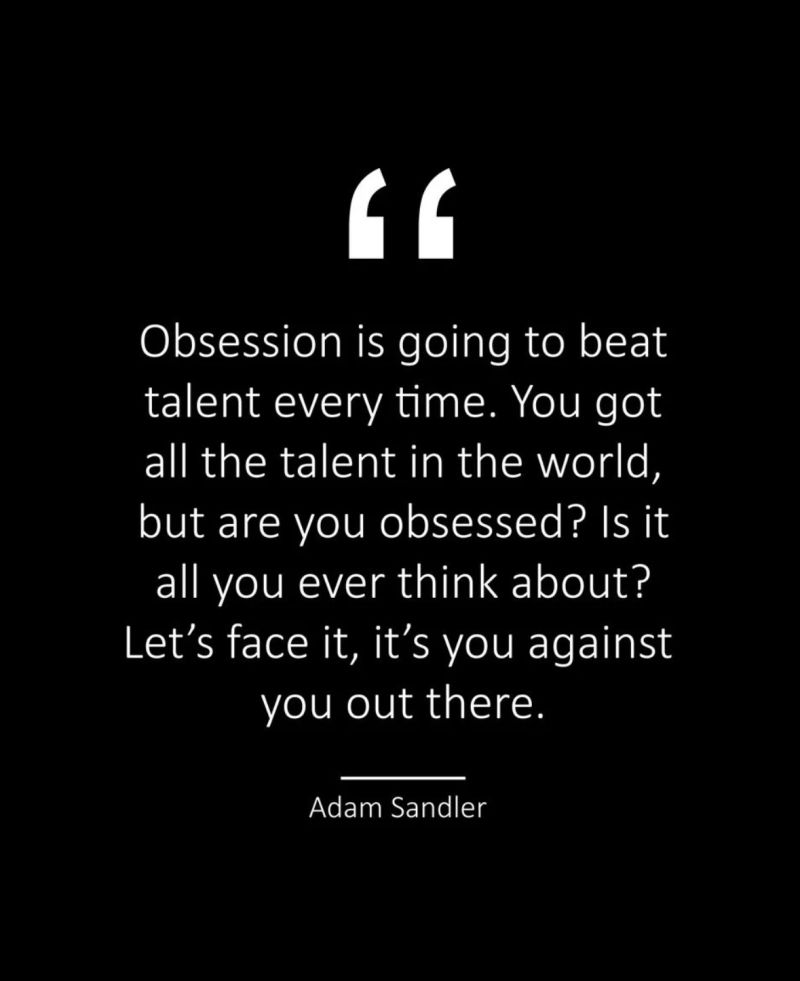
If we look at the specific golf skills he developed in this stage, it’s very helpful to know that he did not hit the ball far for his age. He was one of the shortest players and routinely had to hit driver, fairway wood, fairway wood to get to some holes. He was not hitting wedges into par 4s. He had a very nice swing, it just didn’t have a lot of power early on, very similar to the vast majority of junior golfers at this stage.
Much like other junior golfers, he did not have great touch in his short game in the first 3-4 years of playing. He enjoyed hitting the driver on the range and practicing to hit it far. The main reason it took him 22 attempts at 200 yards and 64 attempts at Level 7 is that his short game needed to be spectacular to beat 36 because he wasn’t hitting it off the tee and fairway very far.
Because the Operation 36 program forced him to problem-solve how to get his score lower, it clicked after being in the program for a few years that his chipping and putting needed to improve. As coaches, we would encourage him to change his practice time from primarily hitting balls to breaking it up 50% long game and 50% short game. How did we know? The scores and stats in Operation 36 gave us an insight into what needed to improve.
Once his chipping/pitching and putting improved, his scores in the 9-hole Operation 36 events and his junior events he played in steadily improved. He found a putter he fell in love with and stuck with that for the majority of his younger years. The grip was so worn out after a few years that the grip was falling apart. He didn’t want to change it out. He fell in love with putting and how important it was for him to compete and progress in the sport.
Most junior golfers never get a chance to learn how important the short game is at an early age. Yes, their coaches emphasize to them over and over again how important it is. However, the vast majority don’t put in the time and focus in that area of the game. Michael was forced to focus on this area or he wouldn’t beat 36.
As his coach, I vividly remember him shooting 37 multiple times in a row and having 16 or 17 putts each time. We would coach him and say that our goal is to have 15 or less putts to have the best chance to beat 36. Once he added up his putts each time, he would immediately go over to the putting green and put in 20 minutes of putting and 20 minutes of chipping without the coaching staff saying anything. It was the perfect learning environment.
To recap, Michael learned the following in the Romance stage of his junior golf career:
In Part 2, we will explore his journey in the Precision stage from age 13 to the present day. Click the image below to go to part 2.